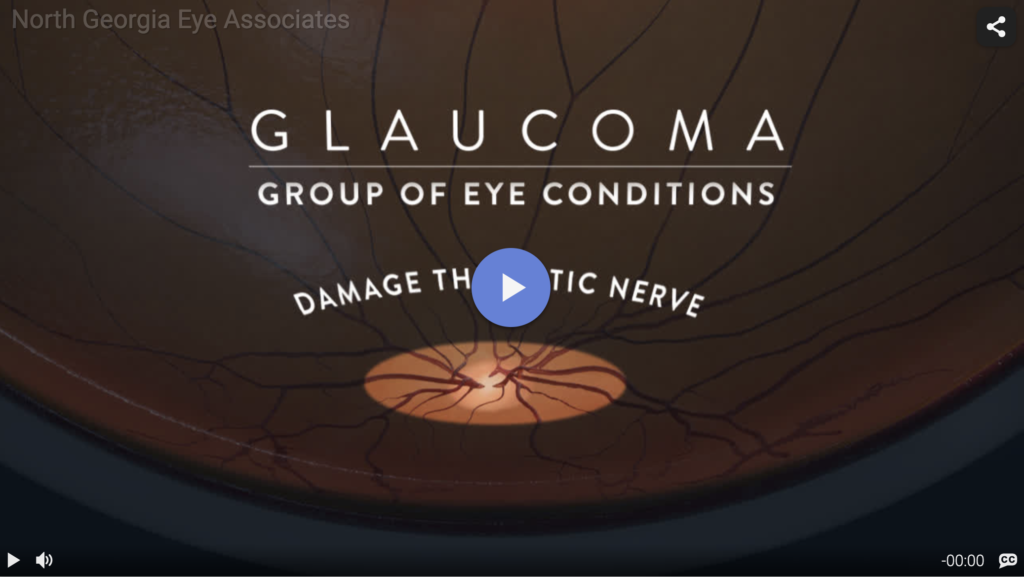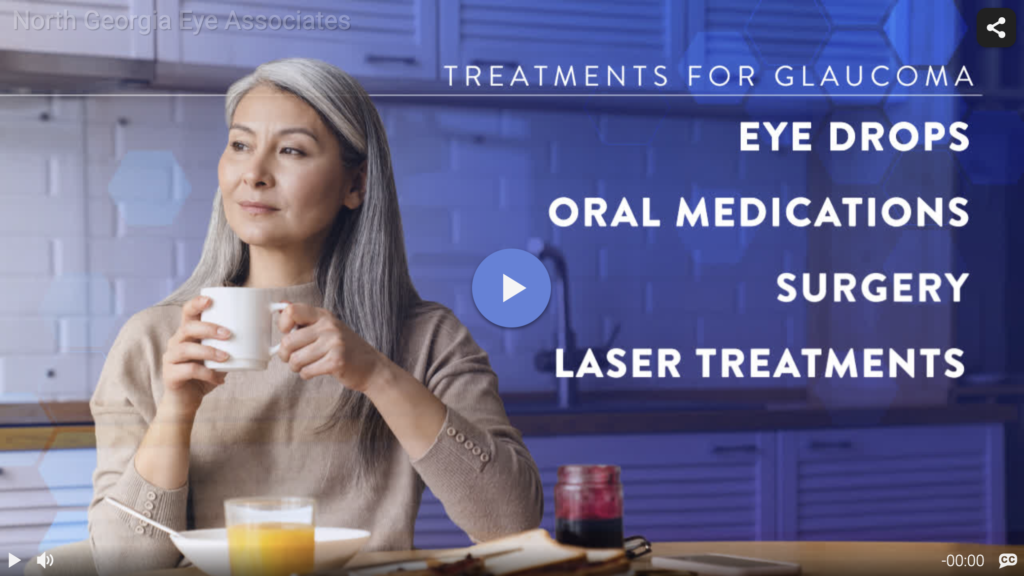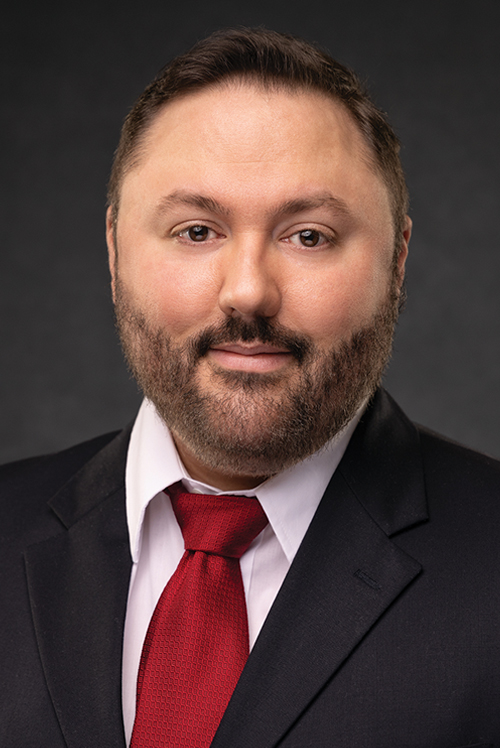Glaucoma

What Is Glaucoma?
Glaucoma is a degenerative eye condition caused by damage to or excessive pressure on the optic nerve. The specialists at North Georgia Eye Associates treat glaucoma to preserve the most vision possible.
Glaucoma is an eye condition that occurs when there’s damage to the optic nerve. This is usually because of intraocular pressure being too high.
This progressive damage to the optic nerve initially causes a gradual loss of side vision that is not noticeable until it is very advanced. For most patients, this means that irreversible and permanent vision loss has already occurred.
Untreated glaucoma will eventually cause blindness. Glaucoma is often called the silent thief of vision because there are few noticeable symptoms of the eye condition. However, if diagnosed early, glaucoma can be managed and treated to avoid further progression. This is why regular eye exams are so crucial.
Eye exams are the only way to detect and diagnose this eye condition. If you’re considered at an increased risk for glaucoma, or you have the condition, careful examination, testing, and follow-up care are needed to preserve your sight. It is possible to prevent vision loss due to glaucoma, but only if it’s detected, diagnosed, and treated as early as possible.
An easy way to understand glaucoma is to consider it a plumbing problem. The eye has a faucet that is continually making fluid, called aqueous humor, and the eye has a drain. Glaucoma happens when the drain does not work well enough to keep up with the faucet. Because of this, the pressure inside the eye builds up. Although glaucoma can occur at any age, the risk of developing the condition increases with age. Glaucoma is most common after 35 – 40 years of age.
It is estimated that glaucoma will affect 1 in every 50 adults. Anyone can develop glaucoma, but people at higher risk include:
However, it is essential to emphasize that even low-risk patients over 35 should have their eyes examined by their eye doctor for glaucoma at least every two years. Also, testing for glaucoma involves much more than a “pressure check” at a health fair.

Many early glaucoma patients have intraocular pressures that vary significantly from day to day or from one hour to the next. It has been estimated that as many as one-third of all early glaucoma patients will present to an eye doctor with a “normal” eye pressure.
Testing for glaucoma based on intraocular pressure measurements alone will result in a significant number of patients with progressive glaucoma being missed. Bottom line: A “pressure test” is not enough.
How Is Glaucoma Diagnosed?
A thorough eye examination that includes intraocular pressure readings and careful assessment of a patient’s side vision (visual field) and optic nerves is essential to diagnose glaucoma early when it is most treatable. At North Georgia Eye Associates, our patients need access to leading-edge technology and expertise to manage their glaucoma properly.
Examples of this technology are the GDx Nerve Fiber Analyzer, the Argon Laser to perform glaucoma laser procedures, the OCT optic nerve analyzer, and the incorporation of pachymetry corneal thickness analysis. These devices give us the most complete information to make our patients’ diagnostic and treatment protocols.
How Is Glaucoma Treated?
Glaucoma is usually treated by lowering the pressure in the eye to a level that hopefully stops progressive damage to the nerve. The first line of treatment for glaucoma is typically topical eye drop medications. Fortunately, many glaucoma drops have been developed over the last few years, with several more on the horizon.
Glaucoma medications typically work by reducing the amount of fluid produced inside the eye or by helping intraocular fluid drain out more efficiently. Some medicines may do both.
It is common to be on two or more medications simultaneously to treat glaucoma. Once a patient is on two or more medications and still needs their intraocular pressures lowered more, they will likely need laser or other glaucoma surgery to reduce the pressure in the eye further if necessary.
If topical medications and laser treatments fail to lower intraocular pressure effectively, glaucoma surgery is an option. Our team performs the latest techniques in glaucoma surgery, offering patients the best likelihood for success in long-term eye pressure reduction.
North Georgia Eye Associates offers the following laser and surgical treatments for glaucoma patients, depending on what’s appropriate for each patient:
Laser
Laser surgery may be an option to open the eye’s drainage system, especially if the intraocular pressure is not adequately reduced by medical treatment or if medical compliance is a problem.
Surgical
Traditional surgery may be recommended for patients with inadequately controlled intraocular pressures with eye drops or laser treatment. The most common type is filtering surgery, also known as trabeculectomy.
During this procedure, a small flap is created in the sclera (white of the eye), allowing for fluid drainage. Your eye doctor may administer anti-scarring medication to keep the flap from healing and closing.










